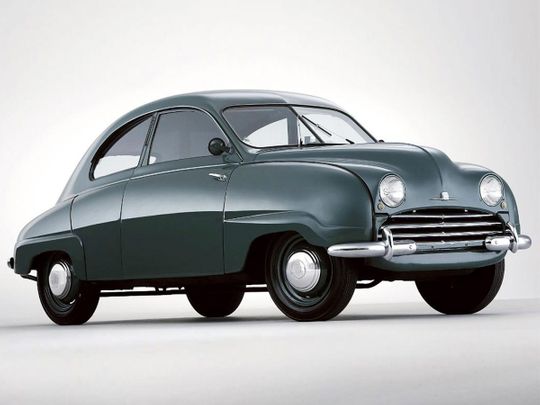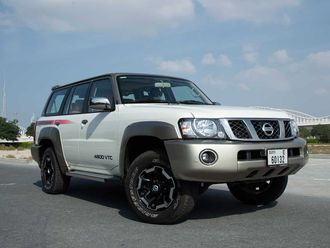
Svenska Aeroplan Aktie Bolag, or SAAB, was a Swedish aircraft company established in the Thirties, and made a name for itself during the Second World War with its bombers. When the war ended, the company decided to diversify into non-military businesses, and considered many ideas from commercial vehicles and motorcycles to even fitted kitchens before settling down on cars.
Development of the automobile began in 1945 under the name Project 92, as the latest two civilian aircraft in the firm’s portfolio were called 90 and 91. The project was led by engineer Gunnar Ljungström and designer Sixten Sason, and the team cobbled together a DKW 18bhp two-cylinder, two-stroke engine, an Auto Union fuel tank and many parts salvaged from a scrap yard to create the first prototype, the Ursaab.
After extensive testing and changes made to the prototypes, the Saab 92 was launched in December 1949. For a first production effort, the Saab 92 was incredibly well-engineered. With its aero-industry heritage, it was no surprise that Saab managed to streamline the car’s design to result in a drag coefficient of 0.32, making it one of the most aerodynamically advanced cars ever made. A strong unibody construction, independent suspension all around, and enough space for four adults in the cabin despite its fastback sports coupé looks, made the Saab 92 popular right away.
All the initial cars were only available in green, purportedly to finish off surplus paint left over from Saab’s wartime aircraft production. Powered by a transversely mounted two-cylinder, two-stroke 764cc engine putting out 25 horses, the 92 managed a top speed of 105kph. Power was sent to the front wheels by a three-speed manual transmission, which had synchronisers only on the second and third gears.
It was not without its idiosyncrasies, though. The 92’s back window was narrow making rear visibility poor, and the earliest models didn’t have a separate boot lid and the luggage area had to be accessed from the rear seats. This was remedied, however, in the 92B that came out in 1953, which had a much larger rear window and a new boot lid that made the luggage compartment accessible from outside. Three new colours apart from green were also available now.
Another interesting option that debuted in the 92B was a bed kit, which along with the detachable rear seats and front seats that folded flat would convert the cabin into a space that could be used for overnight accommodation.
Over 20,000 Saab 92 models were built, of which nearly 15,000 were 92Bs. Prices today range from Dh15,000 for one in fair condition, all the way to Dh60,000 for one in excellent form. In fact, there’s been a spike in the 92’s prices since 2015, so you can be sure that you won’t lose your money. And that’s money worth paying for the Saab that stated it all.




